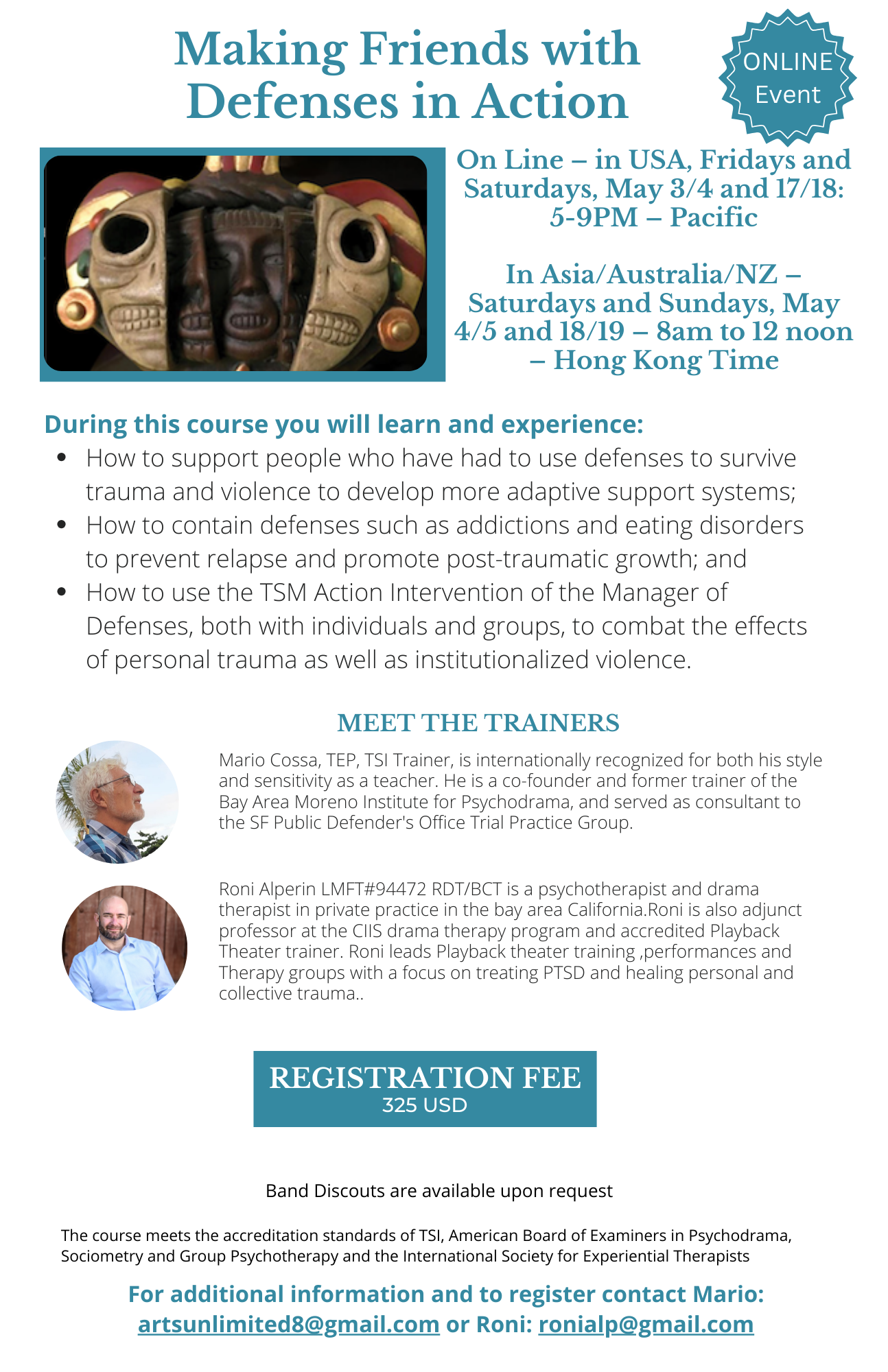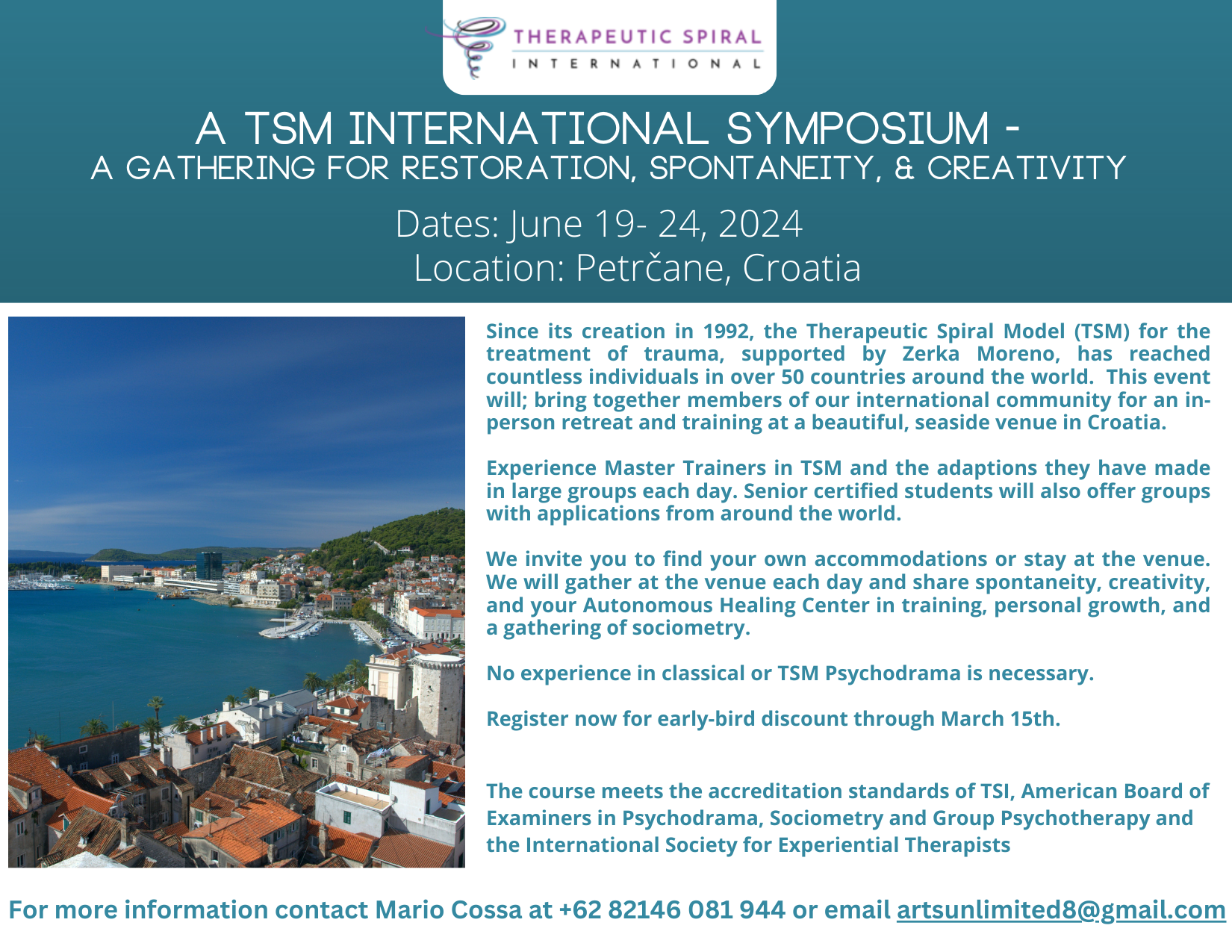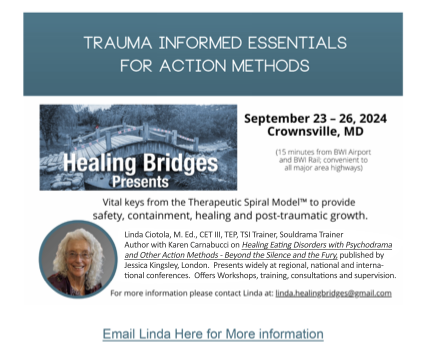TSI Certification Process
Requirements for TSI International Certification in Experiential Trauma Therapy– Level I: Introduction to Theory
Level I: Core Trauma Courses
- The Brain in Action: The Neurobiology of Trauma
- Containment: The Key to Safety with Actions Methods
- Making Friends with Defenses in Action
- Transforming the TSM Trauma Triangle to Post-traumatic Growth
A detailed description with learning objectives for each course is provided at the end of this section of our website.
Personal Growth Workshops using the TSM: All candidates for certifications are required to attend at least one personal growth workshop. Some candidates may be required to participate in a number of such workshops to prepare them for the rigors of the training program and the way in which it may trigger personal material. Once part of a training program, the Clinical Director and/or the candidate’s Primary Trainer may recommend or require additional personal growth work.
Required Reading: includes Experiential Therapy to Treat PTSD: The Therapeutic Spiral Model (Hudgins, 2002 – first edition); Healing Word Trauma with the Therapeutic Spiral Model: Stories from the Frontlines(Hudgins & Toscani, Eds., 2013). All courses will have handouts and supplemental readings. Since this is an experiential method, the majority of the learning is in action which may include: demonstrations, live supervision, protagonist-centered psychodramas, sociodrama, and Playback Theatre.
Required Writing: At the completion of the coursework candidates must submit a reaction paper of approximately 5,000 words (in English) exploring how TSM theory has and/or will influence your professional work. A training journal maintained during the training process may be submitted in lieu of a more formal reaction paper. For those working on practicum certifications while taking Level I courses, reaction papers for each workshop meet this requirement.
Supervision: Upon entering the training program, candidates will develop, in conjunction with the Clinical Director and/or the Director of Training, an Individualized Training Plan (which will include the required number and frequency of supervision sessions) and be assigned a Primary Trainer. There will also be a yearly Training Plan Review supervision conducted by the Director of Training. Supervision requirements for those only interested in Level I Certification are less intensive than for those interested in Level II and Trainer Certifications.
Waivers of specific requirements: Candidates who have prior experience and training in certain areas may submit a request to have certain requirements for certification waived in consultation with the Clinical Director. Candidates who have completed the ACTS on-line course: Introduction to Psychodrama for Trauma Survivors, may opt to waive the Level I – Neurobiology of Trauma Course and (if only completing Level I Certification) may opt to waive the Level I – Containment Course.
Note: for information about the ACTS on-line course, please click here.
There is no specific time limit for completion of the course work and other requirements for certification at this level.
Level I Objectives – Participants will be able to:
- Explain why experiential therapy is the best treatment for PTSD, according to the most recent neurobiological studies.
- Describe basic psychodrama skills of doubling, mirroring, soliloquy, role taking, role playing, role creation, and role reversal.
- Describe the clinical modification of these basic psychodrama skills to work with trauma in a contained action structure.
- Outline the structure of any psychodrama, including warm-up, action and sharing.
- Explain the TSM Six, Action Safety Structures.
- Describe the Trauma Survivor’s Internal Role Atom (TSIRA) that provides a clinical guide for all experiential therapies for safety and direction.
- Explain how to instill the TSM Prescriptive Roles to promote resilience through spontaneity and creativity.
- Explain the Use of the TSM Trauma Triangle to show the internalization of trauma into victim, perpetrator, and the abandoning authority roles and how to transform the triangle with the addition of the appropriate authority role.
- Describe the promotion of post-traumatic growth through the TSM Transformative Roles.
- Outline useful, hands-on, experiential interventions for containment, exploration, and transformation of stress and trauma.
- Describe the use of sociometry to create safety and authentic connection in groups.
- Explain the process for the integration of art and ritual to assist deep healing.
- Articulate how they will develop applications specific to their needs in working with trauma.
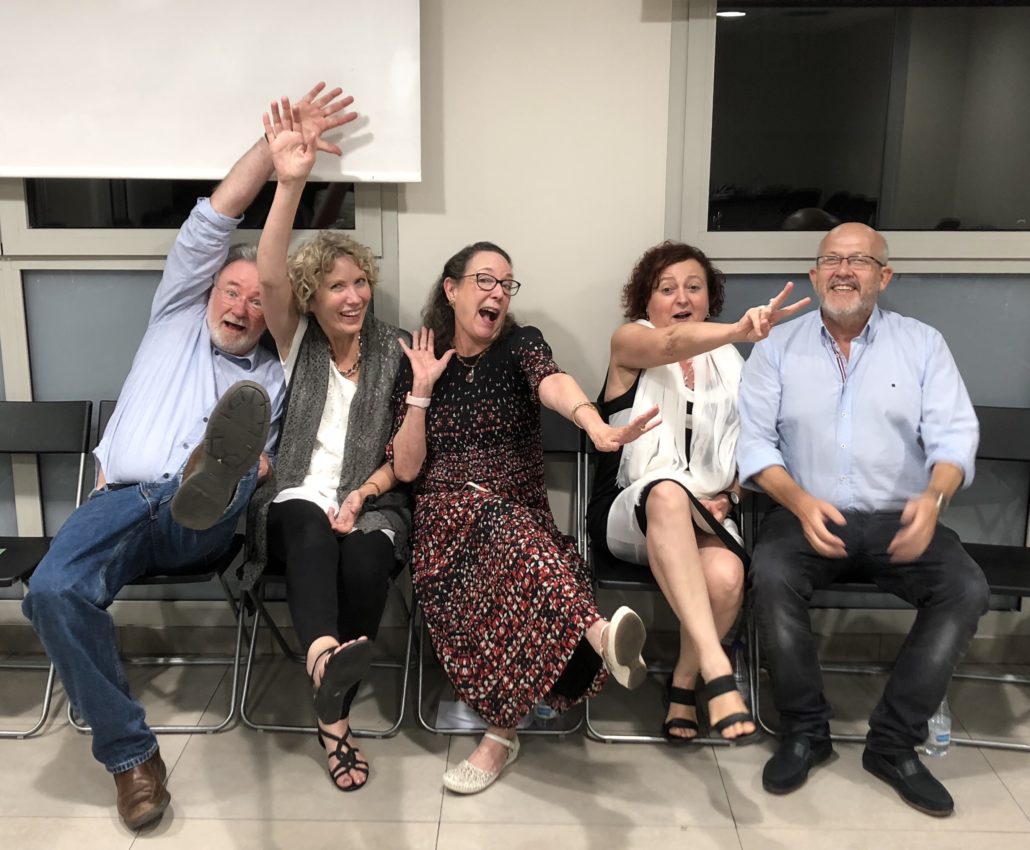
TSI Courses – Descriptions and Goals
Level I – Core Trauma Courses:
Throughout the four, Core Trauma Courses, we teachthe basics of psychodrama, trauma-informed therapy to promote post-traumatic growth, and The Therapeutic Spiral Model including the basic psychodrama skills of doubling, role reversal, sociometry, sociodrama, Playback Theatre, and others from classical psychodrama. In addition, specific clinically-modified TSM interventions for safety when working with trauma (difficult students, clients, managers, et al.) are taught through the clinical map of the Trauma Survivor’s Internal Role Atom (TSIRA) —essentially a map of a person’s psyche. This encourages practitioners to use the TSIRA in their setting of choice, including clinical practice, education, community organizing, business, law, and volunteer work.
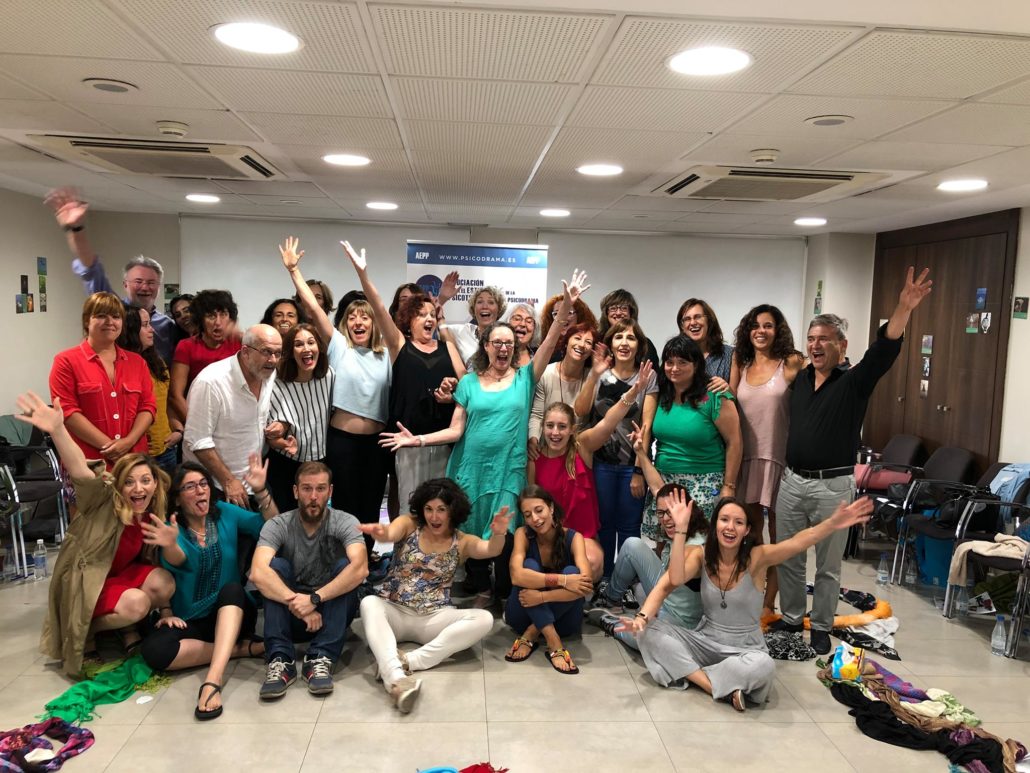
Workshop 1 – The Brain in Action: Neurobiology of Trauma
We now know that people who have experienced traumatic events have significant changes in their neurobiology (within the brain and entire nervous system). The right brain, which holds emotions, relationship information, unprocessed trauma (in the form of flashbacks, body memories, intrusive thoughts, and dissociated feelings), is always turned on by an overactive amygdala. Meanwhile, the left brain’s coherent function, which provides meaning and helps people stay in the here and now, is interrupted by stress hormones as the result of the danger signals from the hypothalamus and amygdala. Most recently, research has shown that much more of the brain develops through interpersonal interaction (showing changes in the brain in the poly-vagal nerve, and in other deeper brain structures) than was previously thought.
This course specifically teaches the Neurobiology of PTSD in Action. We examine many simulated as well as real situations, with participants bringing their own and clients’ stories to the group. Using the Brain in Action, a unique TSM way of demonstrating the neurobiological changes in the brain, allows people a visual learning tool that helps translate the often-difficult language of interpersonal neurobiology into a simple action structure.
This workshop also teaches specific TSM interventions to address the survival defenses against trauma. One such intervention is the Body Double (BD), created by TSI Trainer, Linda Ciotola, M.Ed, TEP (Burden & Ciotola, 2002). The BD is a role that attunes clients to their own bodily sensations, thoughts, and feelings in order to provide self-regulation, self-soothing, and narrative labeling. The BD was developed to decrease dissociation and help people experience their bodies in healthy ways, even during a flashback or body memory, and helps calm and soothe them.
Objectives – Participants will be able to:
- Describe the most recent research on the brain and attachment as affected by trauma.
- Explain why experiential treatment is the treatment of choice for trauma and other stress related disorders, including addictions and eating disorders.
- Demonstrate the structures and processes of both the healthy and traumatized brain shown through the Brain in Action.
- Perform the TSM Body Double clinical action intervention.
- Describe how they will apply learning from this workshop in their professional setting(s).
Workshop 2 – Containment: The Key to Safety with Action Methods
During this course we present the overall template or protocol for conducting TSM psychodrama and all experiential therapy methods safely, regardless of the problems that trauma survivors present. The Trauma Survivor’s Internal Role Atom (TSIRA) is presented in its fullness. The workshop teaches how TSM’s internal roles, especially the prescriptive roles of the TSIRA, can be adapted to help with residual trauma through containment and accurate labeling. Participants learn to balance thinking and feeling so that old, unprocessed memories can be held safely in the present, and re-examined from the here-and-now perspective to find new solutions for old repetitive trauma patterns.
This workshop also teaches a core TSM action intervention called the Containing Double (CD) (Toscani & Hudgins, 1993), which helps clients with trauma to balance the thinking and feeling parts of their brains. This enables them to stay in the present and take new, spontaneous and creative actions. Demonstration and supervised practice of the CD shows how to make the container bigger, as well as smaller, for obsessive thoughts, defenses, and deep feelings. The CD becomes a bridge from defenses to being present in the here-and-now and is the most used TSM intervention worldwide (Hudgins & Toscani, 2013).
Objectives – Participants will be able to:
- Define what containment is and describe why it is needed with experiential methods of change.
- List and define the 3 stages of the TSM protocol from the clinically-based TSIRA: Prescriptive, Trauma-based, and Transformative Roles.
- Demonstrate the specific TSM clinical action intervention of the Containing Double (CD) to provide balance of thinking and feeling at all times.
- Explain how to create a safe container for the expression of deep feelings of grief, rage, despair, and terror for developmental repair.
- Facilitate the accurate labeling of thoughts and feelings to guide integrated action that changes old trauma patterns.
- Describe how they will apply learning from this workshop in their professional setting(s).
Workshop 3 – Making Friends with Defenses in Action
In this workshop, we focus on the defenses people use at the time of trauma to protect themselves and to ensure survival, which then become part of the trauma-survivor’s role repertoire into adulthood. Categories of defenses include: survival, obsessions, compulsions, addictions and eating disorders, as well as those that are simply maladaptive, but deeply rooted. While they worked initially, we see how they can become pathological when they are no longer needed and do not support growth — i.e., true spontaneity and creativity.
The TSM clinical action intervention of the Manger of Defenses (MD) is taught as a two-part structure in which any defense can be concretized through enactment or with the use of objects to represent it. When the MD is established it determines when and if a defense is needed, thus enabling the defense process to move from un-conscious to conscious thought, and supporting old defenses to evolve into healthy psychological protection in the here and now by re-writing their job description.
Objectives – Participants will be able to:
- Describe an overview of defense mechanisms that develop following trauma, including: survival, obsessions, compulsions, addictions and eating disorders, as well as maladaptive coping skills.
- Demonstrate the TSM clinical action intervention of the MD and how to use it in clinical situations and adapt its use to other settings.
- Identify and name their personal defenses that are used most frequently and how to transform them into higher order coping skills.
- Describe how they will apply learning from this workshop in their professional setting(s).
Workshop 4 – Transforming the Trauma Triangleto Post-traumatic Growth
In this workshop, we begin to focus on the trauma-based roles of the TSIRA by learning TSM’s Trauma Triangle—a configuration that clarifies the destructive cycle of Victim, Perpetrator, and Abandoning Authority. In addictions treatment, Karpman’s Triangle is well-known with the interpersonal roles of Victim, Perpetrator and Rescuer. Through years of clinical experience, we’ve redefined this triangle to represent the internalized experience of the trauma survivor. Using role theory, TSM’s Trauma Triangle incorporates the trauma-based roles of Victim, Perpetrator and Abandoning Authority, this last which is internalized when there is no rescuer available in the interpersonal world. The TSM role of the Abandoning Authority helps describes how trauma survivors learn to abandon themselves to dissociation, self-harm, addictions, eating disorders, and lack of self-care.
The role of the Abandoning Authority was inspired, in part, by Dusty Miller’s work (Miller, D. [1994]. Women who hurt themselves: A book of hope and understanding.Harper Collins Publishers, Inc. New York, NY.) about a pattern of behavior which she described as Trauma Re-enactment Syndromeand a role she called the Non-Protecting Bystander.
The Trauma Triangle represents a closed circuit of energy embedded in the personality structure of those who have survived cruelty or trauma, repeating itself as life-long patterns of abuse and neglect. Through personal dramas, this training provides tools to transform the trauma-based roles, empowering transformation from self-neglect to self-care, and instilling healthy problem-solving into daily life. The transformative role of Appropriate Authority is taught as the antidote to being stuck in the TSM Trauma Triangle.
Assessment and enactment of the TSM Trauma Triangle is taught as a pen and paper tool, in action by walking the triangle, and/or by using sociodrama or individual psychodramas.
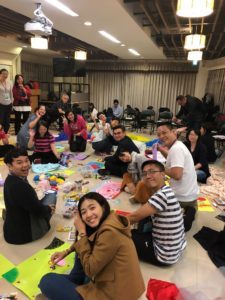 Objectives – Participants will be able to:
Objectives – Participants will be able to:
- Describe the TSM Trauma Triangle and its many uses in education, therapy, and organizations.
- Explain assessment methods in working with the TSM trauma-based roles of victim, perpetrator, and abandoning authority.
- Demonstrate ways to integrate TSM’s prescriptive roles to enact and transform the trauma-based roles safely and without re-traumatization.
- Explain their personal pattern on the Trauma Triangle.
- Transform the identified pattern and build the role of Appropriate Authority that can stop the repetitious internalized pattern of trauma.
- Describe how they will apply learning from this workshop in their professional setting(s).

